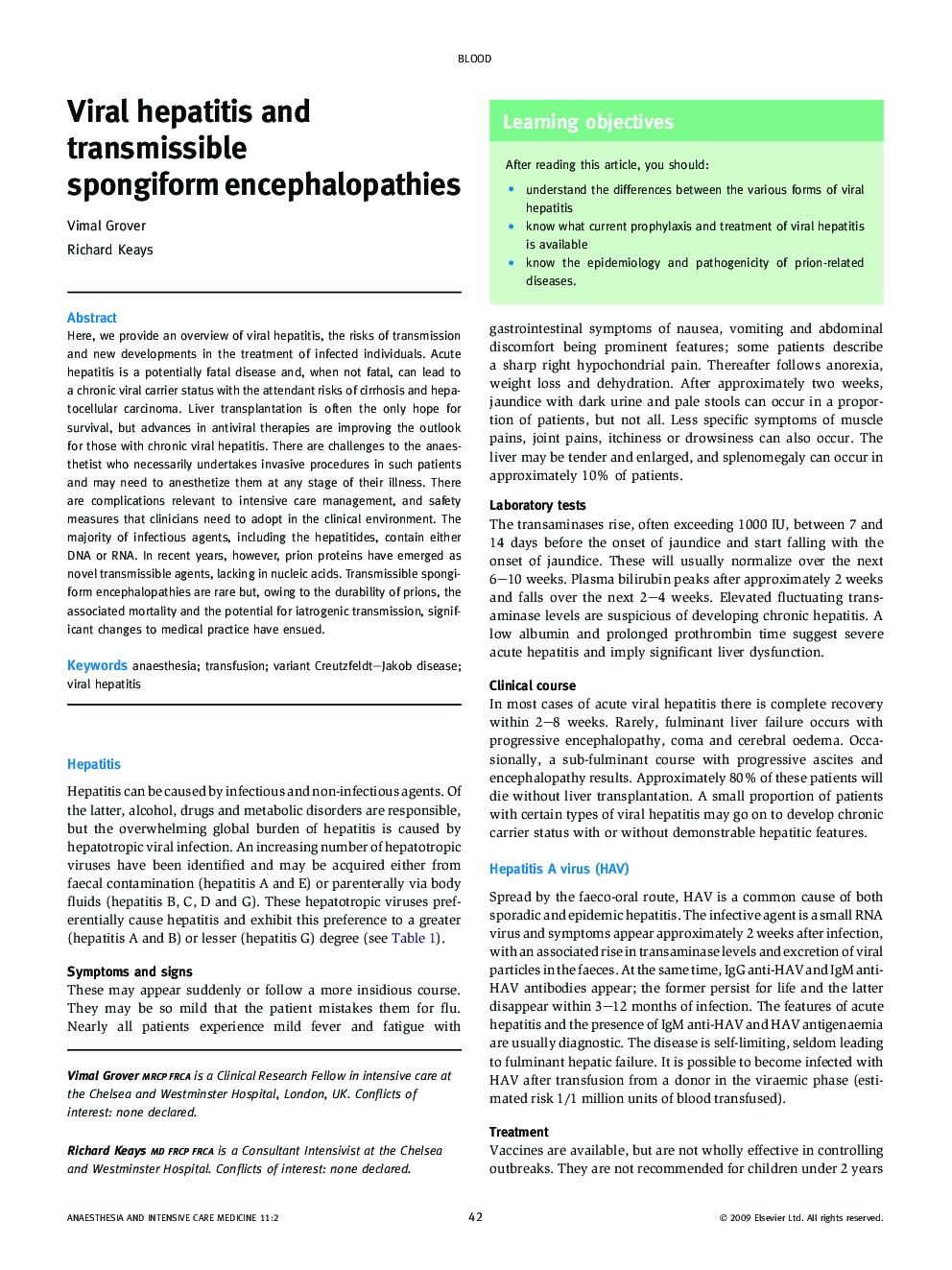| Article ID | Journal | Published Year | Pages | File Type |
|---|---|---|---|---|
| 2743180 | Anaesthesia & Intensive Care Medicine | 2010 | 5 Pages |
Here, we provide an overview of viral hepatitis, the risks of transmission and new developments in the treatment of infected individuals. Acute hepatitis is a potentially fatal disease and, when not fatal, can lead to a chronic viral carrier status with the attendant risks of cirrhosis and hepatocellular carcinoma. Liver transplantation is often the only hope for survival, but advances in antiviral therapies are improving the outlook for those with chronic viral hepatitis. There are challenges to the anaesthetist who necessarily undertakes invasive procedures in such patients and may need to anesthetize them at any stage of their illness. There are complications relevant to intensive care management, and safety measures that clinicians need to adopt in the clinical environment. The majority of infectious agents, including the hepatitides, contain either DNA or RNA. In recent years, however, prion proteins have emerged as novel transmissible agents, lacking in nucleic acids. Transmissible spongiform encephalopathies are rare but, owing to the durability of prions, the associated mortality and the potential for iatrogenic transmission, significant changes to medical practice have ensued.
